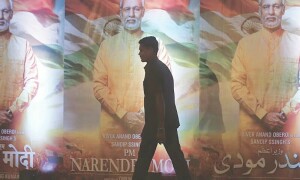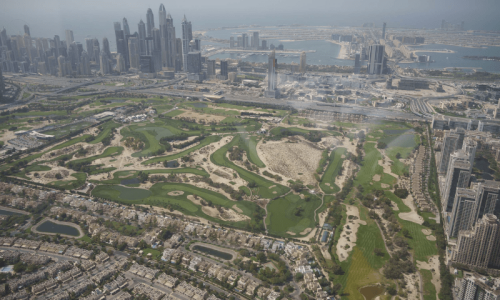POISED on the precipice of another Armageddon, one is reminded of the remark made in the 1940s by Sir Kenneth Clark, then director of the National Gallery, London. Asked why he arranged lunch-time concerts during the London Blitz, he retorted that it was necessary to remind people of the civilisation they were fighting to protect.
Living in a modern battle zone of sorts, one can be forgiven for recalling such moments of intellectual escapism. We live in a battered society where public protests attract penalties, political figures, like zoo animals, are safer behind bars, and festive paper kites are no longer visible in a sky smothered by fog.
My personal escape was in the late 1960s when, freshly transplanted from London to Lahore, I sought refuge from the dull world of accountancy and fled to the Lahore Museum. There, in the timeless world of miniature paintings, redolent with romance, populated by deities and demons, rulers and lovers, heroes and pining heroines, I discovered a world of courtly combat in which death was only symbolic, and blood merely a pigment.
These miniature paintings belonged to a period following the collapse of the Mughal empire in the 18th century when artists migrated to provincial courts, particularly it is believed to states in Rajasthan and the smaller Rajput principalities in the Punjab hills.
We are living in a modern battle zone of sorts.
An earlier parallel of such pockets of artistic renaissance occurred during the 15th and 16th centuries in the north Italian states, notably Venice and Florence. American art historian Bernard Berenson in the 1890s developed a chronology of Italianate painting. His pioneering publications included Venetian Painters (1894), Florentine Painters (1896), and Central Italian Painters (1897) — all of the Renaissance. Berenson’s approach was to identify the artist’s personality and identity through his works, not simply through signatures. As another scholar put it: inscriptions lie; paintings don’t.
In 1899, Berenson created a personality he called Amico di Sandro, “by looking solely at the works and not at documents”. He placed unsigned pictures he attributed to this unknown artist between two contemporaries — Botticelli and Filippino. Later evidence proved that an artist named Sandro did, in fact, exist.
Subsequent scholars benefited from this approach to art history. In the 1950s, Dr W.G. Archer, working in London’s Victoria & Albert Museum, used certain Pahari paintings as evidence to argue that Guler and not Kangra had been the crucible of Pahari painting. Subsequent research confirmed his view.
Archer had an almost symbiotic connection with paintings. His attributions were more accurate than his detractors cared to admit. I was witness to a test of his gift. In 1977, a number of us scholars were taken to San Diego to examine the Ed Binney III collection of miniatures. There Brijen Goswamy noticed that one of the paintings, a Kahlur/Bilaspur image of the casting of Krishna’s horoscope, bore an inscription. It revealed a date of 1705. The scholars present scrambled to check the date Bill had made in his attribution, hoping he was wrong. To their dismay, Bill, unaware of the colophon, had dated it purely on the basis of style to circa 1700!
Over time, Goswamy’s familiarity with Devanagari, Persian and Urdu gave him an edge over Bill Archer and Western scholars, overshadowing their work. Gradually, their pupil matured into an ustad. I was especially gratified, therefore, when during his visit to the Lahore Museum in 2016, Brijen urged its management to reprint my 1966 catalogue of its miniatures. It had withstood the test of time (50 years), and his scholastic scrutiny.
My next venture into art history was in response to another challenge — the identification of over 70 figures in the large canvas by August Schoefft titled ‘The Court of Lahore’ displayed in the Lahore Fort. Schoefft had visited Lahore in the 1840s. Dazzled by the splendour of the flamboyant Sikh darbar, he compressed the politics of the post-Maharaja Ranjit Singh era onto one expansive canvas. Looking critically at the painting, I noticed that Schoefft had cleverly grouped the figures according to their relationship with each other: princes with their peers, courtiers with their colleagues, foreigners with their fellow mercenaries, and assassins with their victims. This research too was published abroad as no publisher here wanted to handle Hindu or Sikh subjects.
I returned to my spouse accountancy to pay for my affairs with art history. I learned from both, though, the importance of seeing, not just looking, of searching behind the apparent.
In today’s environment when governments lie and sewage gushes through news channels, it helps to lose oneself in culture and art. “Art is not escape,” the American poet Robert Hayden wrote, “but a way of finding order in chaos.”
The writer is an author.
Published in Dawn, November 30th, 2023












































Dear visitor, the comments section is undergoing an overhaul and will return soon.